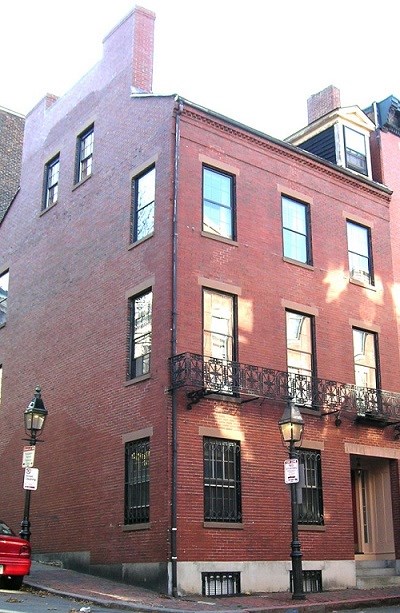
Boston African American NHS/NPS Born in Boston between 1809 and 1813, clothes dealer and community activist John P. Coburn and his family lived at this home beginning in 1844. This house may have been the last commission of renowned architect Asher Benjamin. Coburn ran a successful clothing shop on Brattle Street. Limited evidence suggests that Coburn may have ran a gaming house for wealthy Bostonians in his house. However, his community activism is far better documented. Coburn served as the treasurer of the New England Freedom Association, an organization dedicated to assisting freedom seekers who escaped slavery and came to Boston on the Underground Railroad. Formed in the early 1840s, this group sought "to extend a helping hand to all who may bid adieu to whips and chains, and by the welcome light of the North Star, reach a haven where they can be protected from the grasp of the man-stealer."1 In 1851, authorities arrested, though later acquitted, Coburn for his alleged role in aiding in the courthouse rescue of Shadrach Minkins, the first person apprehended in Boston under the provisions of the 1850 Fugitive Slave Law. Witnesses reported seeing him at the courthouse "'making inflammatory remarks shortly before the rescue began.'"2 Along with other community leaders in the 1850s, Coburn founded the Massasoit Guards, an unsanctioned Black militia. Though state officials ignored their requests for official recognition and support, the Massasoit Guards continued to operate as a force for community self-defense. In their book Black Bostonians: Community Life and Struggle in the Antebellum North, historians James and Lois Horton state: The drive for a black military company was an expression of solidarity and an assertion of potency in the face of federal attack. Blacks felt themselves embattled: the positive, visible, even inspirational presence of disciplined, organized, and armed community members served not only to discourage slave catchers but also to bolster the courage of the threatened community.3 Militia groups such the Massasoit Guards can be considered precursors to the Black Civil War regiments, including the famous 54th Massachusetts Infantry Regiment. Coburn died in 1873 and his home passed to his son Wendell, whose widow, Mary, lived in the house until the turn of the twentieth century. Footnotes
|
Last updated: January 2, 2025
